 Patrick Floyd Garrett was born in Cusseta, Alabama,(below Fort Cusseta)
Patrick Floyd Garrett was born in Cusseta, Alabama,(below Fort Cusseta) and grew up on a prosperous Louisiana plantation near Haynesville in northern Claiborne Parish,
and grew up on a prosperous Louisiana plantation near Haynesville in northern Claiborne Parish, just below the Arkansas state line.
just below the Arkansas state line. 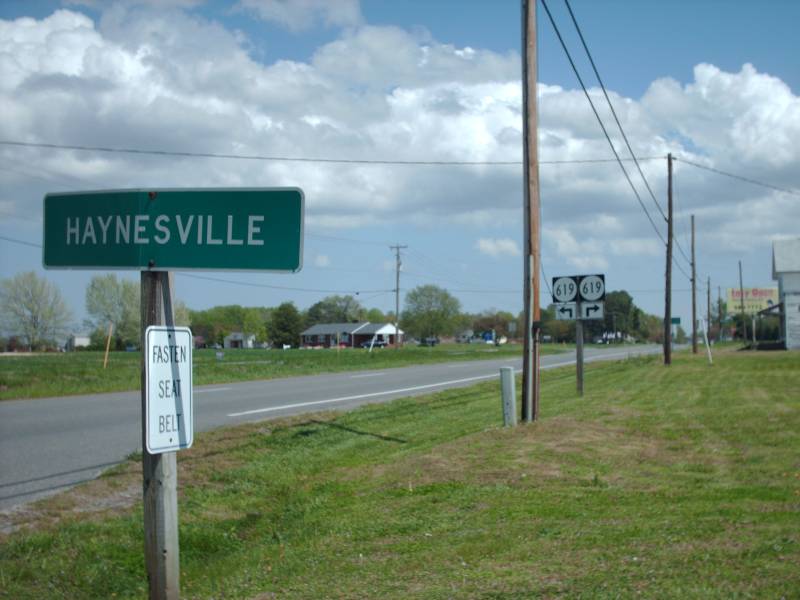 He left home in 1869 and found work as a cowboy in Dallas County, Texas. In 1875, he left to
He left home in 1869 and found work as a cowboy in Dallas County, Texas. In 1875, he left to hunt buffalo.
hunt buffalo. In 1878, Garrett shot and killed a fellow hunter who charged at Garrett with a hatchet following a disagreement over buffalo hides.
In 1878, Garrett shot and killed a fellow hunter who charged at Garrett with a hatchet following a disagreement over buffalo hides. As he lay dying, the hunter brought Garrett to tears upon asking him to forgive him.
As he lay dying, the hunter brought Garrett to tears upon asking him to forgive him.
On November 7, 1880, the sheriff of Lincoln County, New Mexico, George Kimbell, resigned with two months left in his term. As Kimbell's successor, the county appointed Garrett, a member of theRepublican Party who ran as a Democrat and a gunman of some reputation who had promised to restore law and order.

Garrett was charged with tracking down and arresting an alleged friend from his saloon keeping days, Henry McCarty, a jail escapee and Lincoln County War participant who often went by the aliases Henry Antrim and William Harrison Bonney, but is better known as "Billy the Kid".
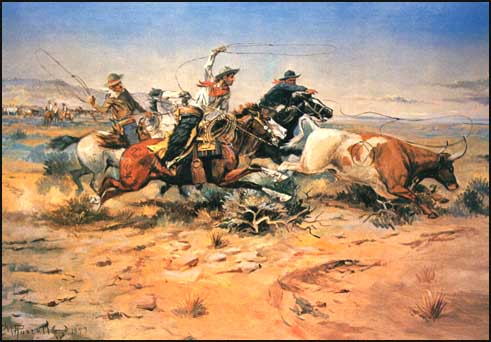
 On December 19, 1880, Garrett killed Tom O'Folliard, a member of McCarty's gang, in a shootout on the outskirts of Fort Sumner. On December 23, the sheriff's posse killed Charlie Bowdre, and captured the Kid and his companions at Stinking Springs (near present-dayTaiban, New Mexico). Garrett transported the captives to Mesilla, New Mexico, for trial. Though he was convicted, the Kid managed to escape from the Lincoln County jail on April 28, 1881, after killing his guards, J. W. Bell
On December 19, 1880, Garrett killed Tom O'Folliard, a member of McCarty's gang, in a shootout on the outskirts of Fort Sumner. On December 23, the sheriff's posse killed Charlie Bowdre, and captured the Kid and his companions at Stinking Springs (near present-dayTaiban, New Mexico). Garrett transported the captives to Mesilla, New Mexico, for trial. Though he was convicted, the Kid managed to escape from the Lincoln County jail on April 28, 1881, after killing his guards, J. W. Bell


Garrett moved to New Mexico and briefly found work as a cowpuncher before quitting to open his own saloon. A tall man, he was referred to by locals as "Juan Largo" or "Long John". In 1879, Garrett married Juanita Gutierrez, who died within a year. In 1880, he married Gutierrez's sister, Apolinaria. The couple had nine children.

McCarty was an alleged murderer who had participated in the Lincoln County War. He was said to have killed 21 men, one for every year of his life, but the actual total was probably closer to nine. New Mexico Governor Lew Wallace had personally put a US$500 reward on McCarty's capture.

and Bob Olinger below.
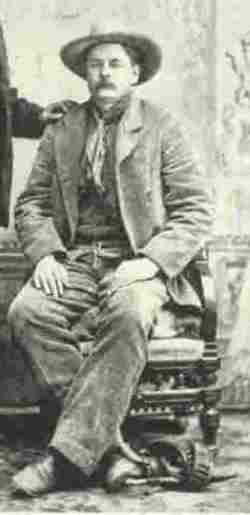

On July 14, 1881, Garrett visited Fort Sumner to question a friend of the Kid's about the whereabouts of the outlaw. He learned the Kid was staying with a mutual friend, Pete Maxwell (son of land baron Lucien Maxwell).
Around midnight, Garrett went to Maxwell's house. The Kid was asleep in another part of the house, but woke up hungry in the middle of the night and entered Maxwell's bedroom, where Garrett was standing in the shadows. The Kid did not recognize the man standing in dark. "¿Quién es? (Who is it?), ¿Quién es?," the Kid asked repeatedly.
Garrett replied by shooting at him twice, the first shot hitting him above the heart, although the second one missed and struck the mantle behind him. (Some historians have questioned Garrett's account of the shooting, alleging the incident happened differently. They claim Garrett went into Paulita Maxwell's room and tied her up. The Kid walked into her room, and Garrett ambushed him with a single blast from his Sharps rifle.)
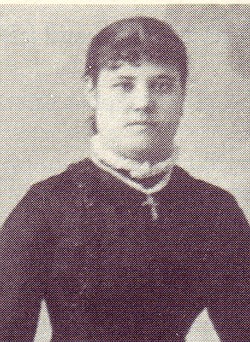
Around midnight, Garrett went to Maxwell's house. The Kid was asleep in another part of the house, but woke up hungry in the middle of the night and entered Maxwell's bedroom, where Garrett was standing in the shadows. The Kid did not recognize the man standing in dark. "¿Quién es? (Who is it?), ¿Quién es?," the Kid asked repeatedly.
Garrett replied by shooting at him twice, the first shot hitting him above the heart, although the second one missed and struck the mantle behind him. (Some historians have questioned Garrett's account of the shooting, alleging the incident happened differently. They claim Garrett went into Paulita Maxwell's room and tied her up. The Kid walked into her room, and Garrett ambushed him with a single blast from his Sharps rifle.)

There has been much dispute over the details of the Kid's death that night. The way Garrett allegedly killed McCarty without warning eventually sullied the lawman's reputation. Garrett claimed Billy the Kid had entered the room armed with a pistol, but no gun was found on his body.

Other accounts claim he entered carrying a kitchen knife, but no hard evidence supported this. Garrett's reputation was also hurt by popular stories that he and Billy had once been friends, and that the shooting was a kind of betrayal, but historians have found no evidence of such a friendship.
His law enforcement career never achieved any great success following the Lincoln County War, and he mostly used that era in his life as his stepping-stone to higher positions. After finishing out his term as sheriff, Garrett became a rancher and released a book in 1882 titled The Authentic Life of Billy, the Kid. His book, a first-hand account about his experiences with McCarty, which helped raise the Kid to the level of historical figure, was in large part ghostwritten by his friend Ash Upson. Garrett lost the next election for Lincoln County sheriff and was never paid the $500 reward for McCarty's capture, since he had killed him.


In 1882, he ran for the position of Grant County, New Mexico sheriff, but was defeated by Sheriff Harvey Whitehill. In 1884, he lost an election for the New Mexico State Senate. Later that year, he left New Mexico and helped found and captain a company of Texas Rangers.








Still, at the time, the shooting solidified Garrett's fame as a lawman and gunman, and led to numerous appointments to law enforcement positions, as well as requests that he pursue outlaws in other parts of New Mexico.
In January 1896, Colonel Fountain served as a special prosecutor against men charged with cattle raiding in Lincoln, New Mexico. With his work finished, Fountain left Lincoln with his eight-year-old son, Henry. The two did not complete their trip home; on the third day, they disappeared near White Sands. below barclay
He returned to New Mexico briefly in 1885. In October 1889, Garrett ran for Chaves County, New Mexico, sheriff but lost. By this time, his rough disposition was beginning to wear thin with much of the populace, and rumors of his less than admirable killing of Billy the Kid were beginning to affect his popularity. Garrett left New Mexico in 1891 for Uvalde, Texas. He returned to New Mexico in 1896 to investigate the disappearance of Albert Jennings Fountain and Fountain's young son, Henry.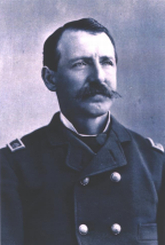

Fountain's disappearance caused outrage throughout the territory. Further complicating matters, the main suspects in the disappearance were deputy sheriffs William McNew, James Gililland, and Oliver M. Lee. New Mexico's governor saw outside help was needed, and he called in Pat Garrett. One problem Garrett encountered was that Lee, McNew, and Gililland were very close with powerful former judge, lawyer, and politician Albert B. Fall.


Garrett, who was appointed Doña Ana County sheriff on August 10, 1896, and elected to the post on January 4, 1897, believed he would never get a fair hearing regarding his evidence while Fall was in control of the courts. Therefore, Garrett waited two full years before presenting his evidence before the court and securing indictments against the suspected men. McNew was quickly arrested, and Lee and Gililland went into hiding.

On December 20, 1901, Theodore Roosevelt, who became a personal friend of Garrett, appointed him customs collector in El Paso, Texas. Garrett served for five years. He was not reappointed, however, possibly because he had embarrassed Roosevelt by showing up at a San Antonio Rough Riders reunion with a notorious gambler friend, Tom Powers. Garrett had Powers pose in a group photograph with Roosevelt, resulting in bad publicity for the president.
Garrett's posse caught up with Lee and Gililland on July 12, 1898. One of Garrett's deputies, Kurt Kearney, was killed in the gun battle that followed. Garrett and his posse then retreated, and Gililland and Lee escaped. They later surrendered, although not to Garrett. Both stood trial and were acquitted. The location of the Fountain bodies remains a mystery.


Garrett had been warned about his close association with Powers by friends. Years earlier, Powers had been run out of his home state of Wisconsin for beating his father into a coma. Garrett did not listen, and when his reappointment was denied, he traveled to Washington, D.C., to speak personally with Roosevelt.

He had the bad judgment of taking Powers with him. In that meeting, Roosevelt told Garrett plainly that there would be no reappointment.
Garrett's main creditor, rancher W. W. Cox, who was brother-in-law to Oliver M. Lee, worked out a deal to repay the debt by using Garrett's Quarter horse ranch in the San Andres Mountains slopes as grazing land for one of his partners. There is no deal on record in the courthouse, and no deed from Garrett to Cox. Cox took over the ranch and razed the home. Garrett's son, Pat, Jr., kept the upper ranch with the water until his death. Garrett agreed to the deal, not realizing Jesse Wayne Brazel would be grazing goats rather than cattle on the land.
Garrett objected to the goats, feeling their presence lowered the value of his land in the eyes of buyers or other renters. By this time, questions surrounding the manner in which he killed Billy the Kid and Garrett's general demeanor had led to his becoming quite unpopular. He no longer had any local political support, his support from President Roosevelt had been withdrawn, and he had few friends with power.


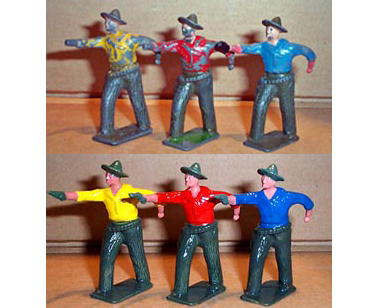


Garrett retired to his ranch in New Mexico but was suffering financial difficulties. He owed a large amount in taxes and was found liable for an unpaid loan he had cosigned for a friend. Garrett borrowed heavily to make these payments and started drinking and gambling excessively. He crossed paths regularly with Oliver M. Lee and Lee's corrupt attorney, Albert Fall, always finding himself on the opposite end of their illegal land deals and intimidation of local ranchers and citizens.
There has occasionally been disagreement about the identity of Pat Garrett's killer. Today, most historians believe Jesse Wayne Brazel, who confessed to the shooting and was tried forfirst degree murder, did in fact commit the crime. Cox paid his bond and retained Fall as his defense attorney. Brazel claimed self defense, claiming Garrett was armed with a shotgun and was threatening him. Adamson backed up Brazel's story. The jury took less than a half-hour to return a not guilty verdict. Cox hosted a barbecue in celebration of the verdict.Garrett and Carl Adamson, who was in the process of talks with Garrett to purchase land, rode together, heading from Las Cruces, New Mexico in Adamson's wagon. Brazel showed up on horseback along the way. Garrett and Brazel began to argue about the goats grazing on Garrett's land. seated is bazel

Garrett is alleged to have leaned forward to pick up a shotgun on the floorboard. Brazel shot him once in the head, and then once more in the stomach as Garrett fell from the wagon. Brazel and Adamson left the body by the side of the road and returned to Las Cruces, alerting Sheriff Felipe Lucero of the killing.

Another alleged suspect in Garrett's death was the outlaw Jim Miller, a known killer for hire and cousin of Adamson. Miller was alleged to have been hired by enemies of Garrett, but this is believed to be only a rumor because Adamson was kin to him, and Miller is believed to have been in Oklahoma at the time. Oliver Lee was also alleged to have taken part in a conspiracy to kill Garrett, made up of businessmen and outlaws who disliked the former lawman. However, despite his previous clashes with Garrett, there is no evidence to support the claim.
Garrett's body was too tall for any finished coffins available, so a special one had to be shipped in from El Paso. His funeral service was held March 5, 1908, and he was laid to rest next to his daughter, Ida, who had preceded him in death eight years earlierThe location of this marker has been a fairly closely kept secret, but is now being made public because the city of Las Cruces is annexing the land where the marker is located. An organization, Friends of Pat Garrett. has been formed to ensure that the city preserves the site an
To date, the common belief is the death happened as Brazel said it did. Garrett was known to have carried a double-barreled shotgun when he traveled, and he had a fiery temper. Garrett could have reacted violently during his argument with Brazel.
The site of Garrett's death is now commemorated by a historical marker,below britains in mazak

which can be visited south of U.S. Route 70, between Las Cruces and the San Augustin Pass. The highway marker is not at the actual spot where Garrett was shot. The location of the shooting was marked by Pat's son Jarvis Garrett in 1938-1940 with a monument of his construction. The monument consists of concrete laid around a stone with a cross carved in it. The cross is believed to be the work of Pat's mother. Scratched in the concrete is "P. Garrett" and the date of his killing.

Garrett's grave and the many graves of his descendants can be found in Las Cruces at the Masonic Cemetery.
No comments:
Post a Comment